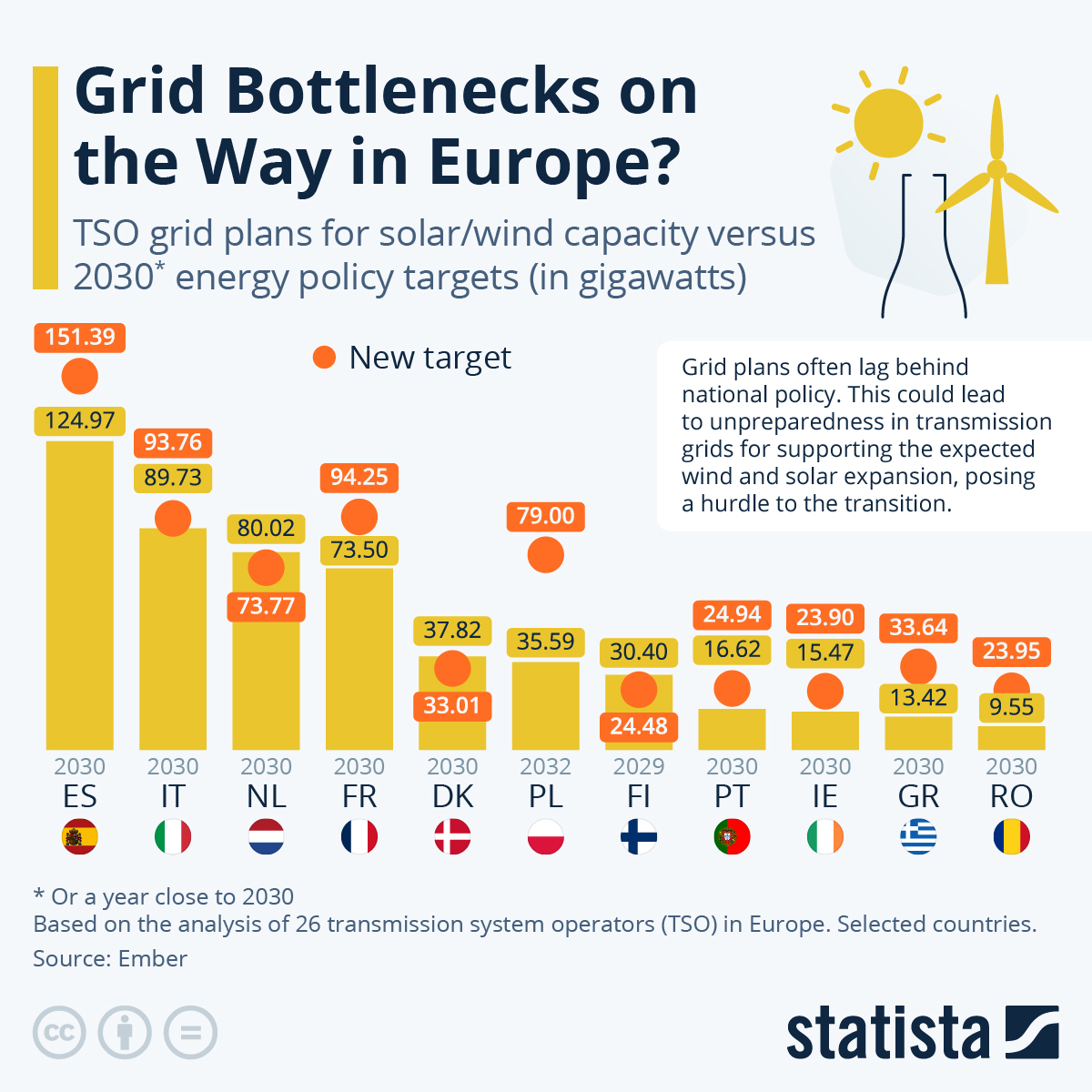
A new analysis by the energy think tank Ember has found that several countries in Europe could soon face bottlenecks in their national transmission energy grids, as more solar and wind power will be generated than these networks have capacity for.
As Statista's Anna Fleck shows in the following chart , Spain, France and Poland are just some of the countries that will have energy grids which undershoot their country’s respective 2030 policy targets for wind and solar capacity.
Out of the 26 countries studied by Ember in this comparison, 11 will not have enough capacity for the expected wind and solar build out if the present grid plans are realized.
You will find more infographics at Statista
This pattern is not Europe-wide though: several grid plans were found to be closely aligned to the renewable energy targets and and in four countries they were even more ambitious (Croatia, Denmark, Finland, and the Netherlands).
According to the writers of the report, these latter countries have adopted a “sensible approach that better prepares transmission networks to accommodate potential future step ups in national ambition levels.”
Ember analysts say that the misalignment between grid plans and policy targets is likely due to a time lag between the creation of national policy and the development of grid plans, adding that the current lack in grid plan capacities is due to previous policy targets.
The deficit in capacity is problematic, as the writers of the report explain:
“Since it takes far longer to increase grid capacity than it does to deploy wind and solar projects, grids may not be prepared to meet the scale of future increases.”
This will make it harder to achieve energy policy targets.
A new analysis by the energy think tank Ember has found that several countries in Europe could soon face bottlenecks in their national transmission energy grids, as more solar and wind power will be generated than these networks have capacity for.
As Statista’s Anna Fleck shows in the following chart , Spain, France and Poland are just some of the countries that will have energy grids which undershoot their country’s respective 2030 policy targets for wind and solar capacity.
Out of the 26 countries studied by Ember in this comparison, 11 will not have enough capacity for the expected wind and solar build out if the present grid plans are realized.
You will find more infographics at Statista
This pattern is not Europe-wide though: several grid plans were found to be closely aligned to the renewable energy targets and and in four countries they were even more ambitious (Croatia, Denmark, Finland, and the Netherlands).
According to the writers of the report, these latter countries have adopted a “sensible approach that better prepares transmission networks to accommodate potential future step ups in national ambition levels.”
Ember analysts say that the misalignment between grid plans and policy targets is likely due to a time lag between the creation of national policy and the development of grid plans, adding that the current lack in grid plan capacities is due to previous policy targets.
The deficit in capacity is problematic, as the writers of the report explain:
“Since it takes far longer to increase grid capacity than it does to deploy wind and solar projects, grids may not be prepared to meet the scale of future increases.”
This will make it harder to achieve energy policy targets.
Loading…





